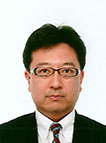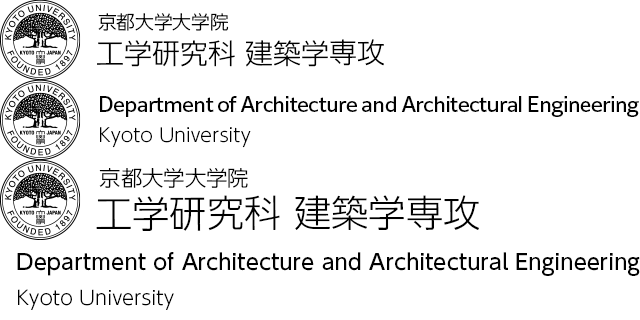Earthquake Engineering for Seismic Safe Design of Structures
In our lab, research and development related to earthquake environmental engineering is being explored in order to find ways to secure seismic safety of structures. In an even of an earthquake, source, path, and site characteristics as well as soil-foundation-structure interaction strongly affects the seismic action to structures. The members of our lab pursue studies to understand the characteristics and the influence of these aspects as well as to improve seismic safety of structures based on observation.
Academic Staff
Shinichi MATSUSHIMA
 Professor (Disaster Prevention Research Institute)
Professor (Disaster Prevention Research Institute)
Research Topics
- Seismic risk evaluation based on strong motion estimation considering heterogeneous source process and subsurface velocity structure
- System development for improving precision of subsurface velocity structures
- Methodology for identifying the subsurface structure based on microtremor measurements
- Studies on Soil-Foundation-Structure interaction
Contacts
Room S414D, Uji Campus Main Bldg. South Wing
TEL: +81-774-38-4080
FAX: +81-774-38-4075
E-mail: matsushima![]() sds.dpri.kyoto-u.ac.jp
sds.dpri.kyoto-u.ac.jp
Fumiaki NAGASHIMA
 Associate Professor (Disaster Prevention Research Institute)
Associate Professor (Disaster Prevention Research Institute)
Research Topics
- Identification of subsurface velocity structures using earthquake records and evaluation of site amplification factors
- Development of a simple method to estimate nonlinear behavior of ground structures during strong shaking
- Modeling of nonlinear behavior of buildings, damage prediction and risk evaluation
Contacts
Room S417D, Uji Campus Main Bldg. South Wing
TEL: +81-774-38-4081
FAX: +81-774-38-4075
E-mail: nagashima![]() sds.dpri.kyoto-u.ac.jp
sds.dpri.kyoto-u.ac.jp
Research Topics
1. Detection of areas with possibility of strong shaking that may cause damage to structures
The strong ground motion that cause heavy damage to structures observed in the source region in an event of a magnitude 7 class earthquake such as the recent 2016 Kumamoto Earthquake and 1995 Kobe Earthquake, is characterized by the effect of the source process and the velocity structure. We investigate the location where the combination of the source and velocity structure may produce strong ground motion that leads to structural damage and estimate the strong ground motion for the expected future earthquakes. By considering the strong ground motions obtained in this way for the design and seismic reinforcement of structures, it is anticipated we can make safer structures.
In order to obtain our goal, we analyze strong ground motion data and microtremor data, develop methodology to model the precise characteristics of the velocity structure and estimate the strong ground motion due to large magnitude earthquakes in the future with high precision.

Structural damage observed in Mukawa-town, Yufutsu district, Hokkaido due to the shaking of the 2018 Hokkaido Eastern Iburi Earthquake
2. Establishment of a methodology for identifying the subsurface velocity structure with lateral heterogeneity focusing on Horizontal-to-Vertical spectral ratios of microtremors
It is now recognized that the directional dependency of the Horizontal-to-Vertical spectral ratios of microtremors (MHVRs) and earthquakes (EHVR) have some relation to the lateral heterogeneity of the subsurface velocity structure. By using a method based on diffuse field assumption which can quantitatively evaluate the MHVRs at a site with lateral heterogeneity, we are developing a methodology according to the relation between the lateral heterogeneity and MHVRs to identify the lateral heterogeneity such as those at the basin edge.

Microtremor Horizontal-to-Vertical spectral ratio that shows directional dependency, observed in the central part of Kyoto basin
3. System development for improving precision of subsurface velocity structures
Strong ground motion data is consecutively being collected by the strong motion networks operated by many institutes extended all over Japan. By effectively applying these data, construction of high precision substructure velocity model is highly expected, but since the amount of data collected is enormous, the problem we face now is how to utilize these “big data”. The aim of our study is to establish a methodology to update the existing subsurface velocity model as new data is accumulated.
4. Evaluating and modeling nonlinear characteristics of ground structure and buildings during strong shakings
Behavior of ground structures and buildings during strong shaking is nonlinear and different from the linear one during weak shaking, and subtle difference in conditions may change the behavior drastically. The nonlinear characteristics have a large impact on ground motions and building responses, so it is important to study such nonlinearities to predict ground motions and evaluate risks of damages caused by strong earthquake motions accurately. We investigate the nonlinear characteristics of ground structures and buildings using records of past earthquakes in order to develop a model to predict ground motions of future earthquakes.
